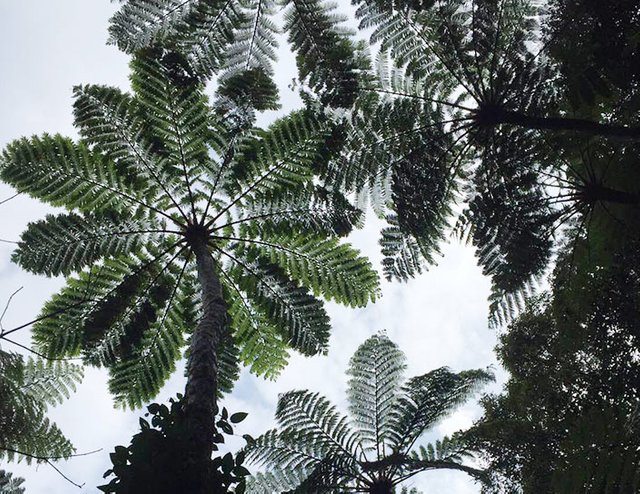That time mushrooms saved the world

This is an ancient, primitive history. From an Earth that had already suffered many apocalypse and that was heading, slowly but decidedly, towards another glacial collapse. An Earth of dense air, where carbon dioxide was disappeared and oxygen reached such high levels that it is difficult to imagine.
Where the centipedes of two and a half meters dragged their bodies without worries and where the 75 centimeter dragonflies plowed the skies of half a planet. But, above all, an Earth where wood reigned. A tyrannical reign that pushed the world towards the fourth glaciation. As Andrew Tomes explained, that's how mushrooms saved the world.
In the depths of the primitive forest

It's going to sound weird, but where the paleobiology goes, take off Game of Thrones, Star Trek or Star Wars. The story of life is a story of wit, betrayal and perseverance with dramatic twists that if they were part of a script we would dismiss them as little credible. About 430 million years ago, plants began to develop vessels rising above the cellulose structures.
It was an innovation of those who make history. Today, it is the most abundant organic polymer on the planet. Easy to make, cheap and very stable: cellulose allowed building structures that were rigid enough, but flexible enough to raise plants of a huge size. It was not unusual to find plants over 30 meters high.
The big problem was that cellulose is a biomolecule composed of βglucose. When it began to be synthesized, it was relatively safe, but there is no glucose structure that supports several assaults to the evolutionary pressure. Although animal lines never developed enzymes to break down cellulose, many bacteria, protozoa and fungi did.
Ruminants, for example, base their diet on the fact that the rumen's microbiota (one of its four digestive sacs) ferments and degrades the plant material, so they can feed themselves. At the time we talked about there were no ruminants, of course, but the first large arborescent plants saw how their situation was compromised by the emergence of microbes to which pulp was pumped.
When you can not make firewood from the fallen tree

And, it was just there, at the dawn of the Carboniferous period, when the plants removed lignin from their sleeves. The structures based on this polymer were harder, more rigid and more complex than those that only used cellulose. But, above all, they were based on phenol.
Or what is the same, the "only way" to extract its energetic power is setting it on fire and the living beings of the coal mine had no lighters at hand. There was no one to digest that and, for that very reason, the wood became impregnable.
The woody plants became tremendously successful and, without "predators", they were conquering every inch of fertile Earth there was. Carbon has never been fixed as it was set at that time and that became a problem. As that wood was not biodegradable, "wood pollution" (a concept of Tomes that I love) began to reduce the levels of CO2 in the atmosphere to limits never seen. With this, came the drop in temperatures.
The feedback cycle had begun: the shortage of carbon dioxide caused temperatures to drop and low temperatures strangled biodiversity, slowing the emergence of the promised maderóvoro. A perfect play. Or almost.
A hero called Agaricomycetes

Because after 40 million years of reign, a small fungus called Agaricomycetes learned that, instead of digesting lignin, it was best to use certain enzymes to "bombard wood with oxygen" until it released cellulose.
As Tomes says, that was the only time in the last 300 million years that a living being learned to break down wood. All the fungi that can do it today, derive from Agaricomycetes. Without it, the reign of wood might never have come to an end and, who knows, today the world would be full of giant centipedes about to celebrate Christmas. Not everything would be bad news, of course: with 100 feet, typing would be easier.
You received a 10.0% upvote since you are not yet a member of geopolis.
To read more about us and what we do, click here.
https://steemit.com/geopolis/@geopolis/geopolis-the-community-for-global-sciences-update-2-higher-base-votes-new-logo
If you do not want us to upvote and comment on your posts concerning earth and earth sciences, please reply stop to this comment and we will no longer bother you with our love ❤️
thank you already register me, thanks for the vote and the help to the small we are working to grow
excellent post friend, thanks for the information you upload is of great quality and in support of the environment continues like this.
nothing fighting for planesta better.
Good post
thanks for your support
good post
nothing fighting for planesta better.